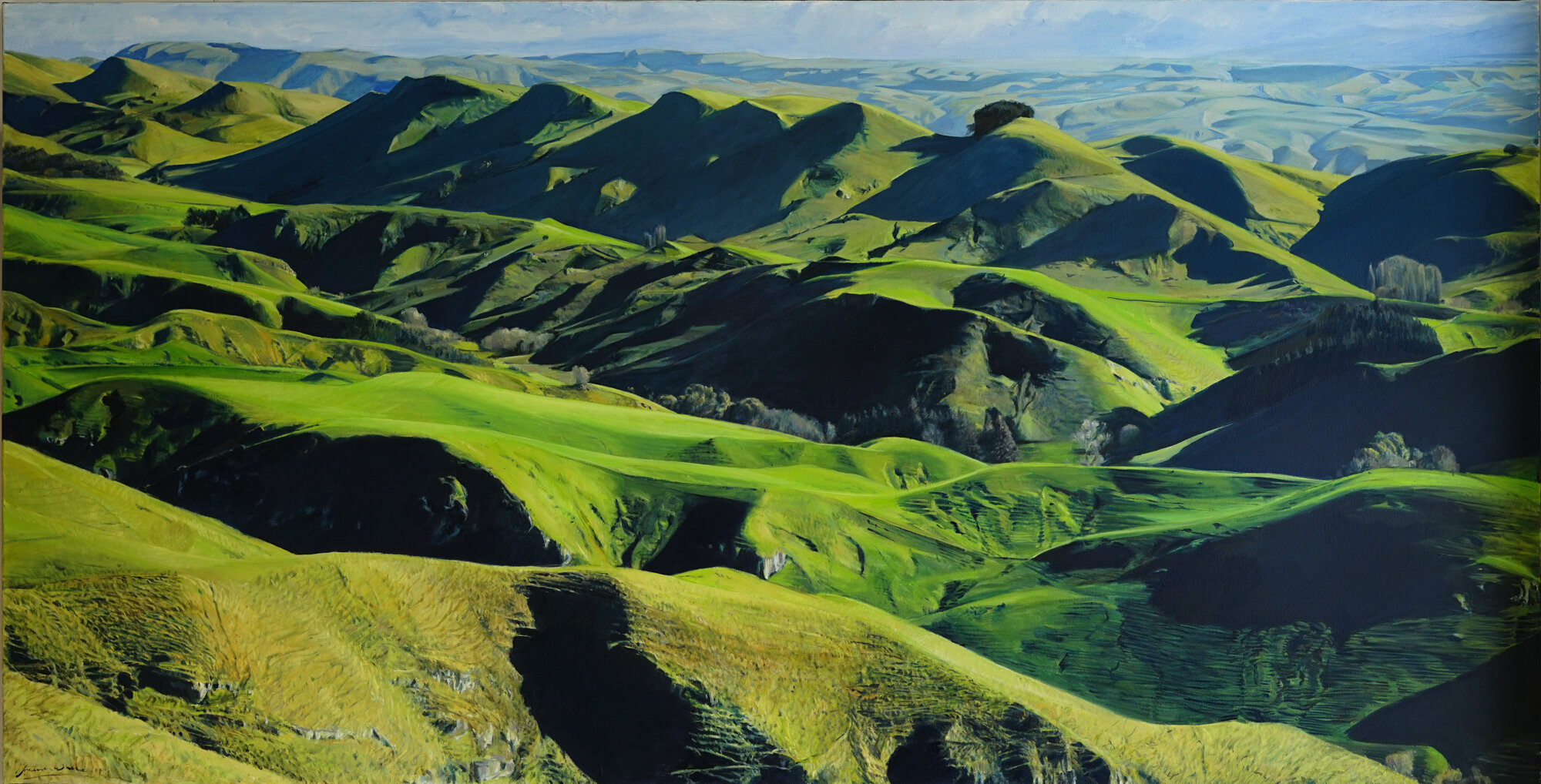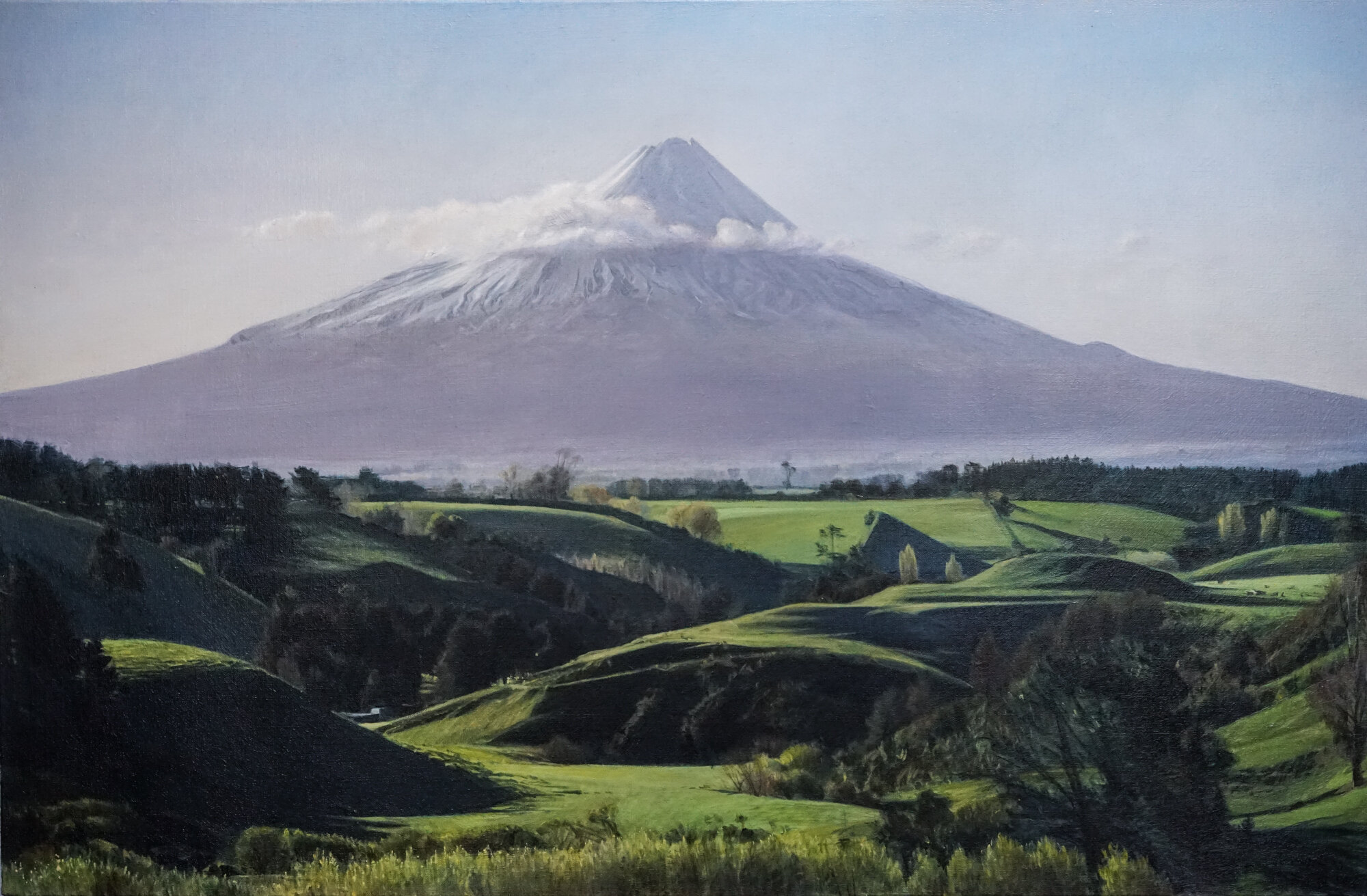Aotearoa’s lineage of landscape painting began with early colonisation and the visual documentation of the unique and foreign surroundings they encountered upon arrival. This fascination with capturing Aotearoa’s unique beauty has been a continual theme throughout the nation’s art history. Perhaps then unsurprising that this traditional artform has such sustaining power, as the beauty of Aotearoa’s landscape is a defining feature of cultural identity.

Within this history of landscape painting dating back to the 1700s, where does a contemporary landscape painter place themselves? Artist, Freeman White securely plants himself in this lineage as a refreshing contemporary counterpart. His works captures an awe and respect for the beauty and power of nature in a time that the ocean and earth are politically charged. White brings the serene vistas that we visit periodically into the internal spaces we enjoy daily, reconnecting us intentionally with the artists outlook.
Formerly focusing his practice on portraiture, White started his career as a preeminent New Zealand artist winning first prize in the 2006 ADAM National Portrait Awards. This award gained White international recognition leading him to exhibit in the REAL international symposium for Figurative Art in Germany in both 2007 and 2009. White also spent six months painting portraits in Edinburgh after being invited by Director of the Scottish National Portrait Gallery, James Holloway. His works now feature in many private and public collections including the New Zealand Portrait Gallery and The Royal Society of New Zealand.
It was in 2009 that Freeman White embarked on painting his incredible landscapes, pushing the genre through both technique and context. His masterfully painted canvases place the viewer in contemporary New Zealand. His beautifully textured and layered brushstrokes give his canvases a charged energy whereby the viewer too experiences the breathtaking and ever changing vistas of the land. White has since continued with his intelligent take on the genre becoming one of New Zealand’s leading landscape painters.
White’s landscapes, and more recent seascapes, reference a history of art making while contributing to a wider contemporary movement. Nature becomes a politically and emotionally charged, a beautifully fraught muse. While White is inspired by Aotearoa’s long landscape history, his subject matter is very much contemporary, an account of New Zealand’s current environmental climate. His painting acts as an accurate documentation and contemporary record of both the beauty of Aotearoa and the current impact of civilization on our land; a purposeful juxtaposition to the often Romatic and idealized versions of New Zealand depicted throughout art history.
The artist often paints en plein air much like his colonial counterparts, recording and reproducing what he sees in front of him onto the canvas. Though, White reminds us that “paint is not confined solely to be used for the reproduction of imagery, paint has its own very real and physical qualities” and thus giving the painting “a human ability, that are imbued with human emotion, captured in every mark, in every brushstroke. The act of translating the image into paint gives it a human quality that can only be achieved by hand”.
In his landscapes, White draws focus to the other subtle natural elements that make his works so appealing. His masterful ability to capture the shifting sun, a glowing warmth on one side of a rolling hill with an encroaching shadow on the other enlivens the senses for the viewer. He does not just focus on the beauty of the vistas visually, rather how they might feel if you were to stand there too. The rolling hills and turbulent oceans plant the viewer in the work as if they too are on the beach about to feel the onslaught of salt spray floating above the tumbling waves.
Whites practice is a visual journal of the land and sea as he experiences it, the visceral effect of his works connects the viewer to Aotearoa’s timeless and every-changing beauty through a contemporary perspective. Freeman White’s wide recognition and appreciation is testament to his contribution and place in the art history of Aotearoa’s landscape.
ESSAY BY ROSE RANDELL
